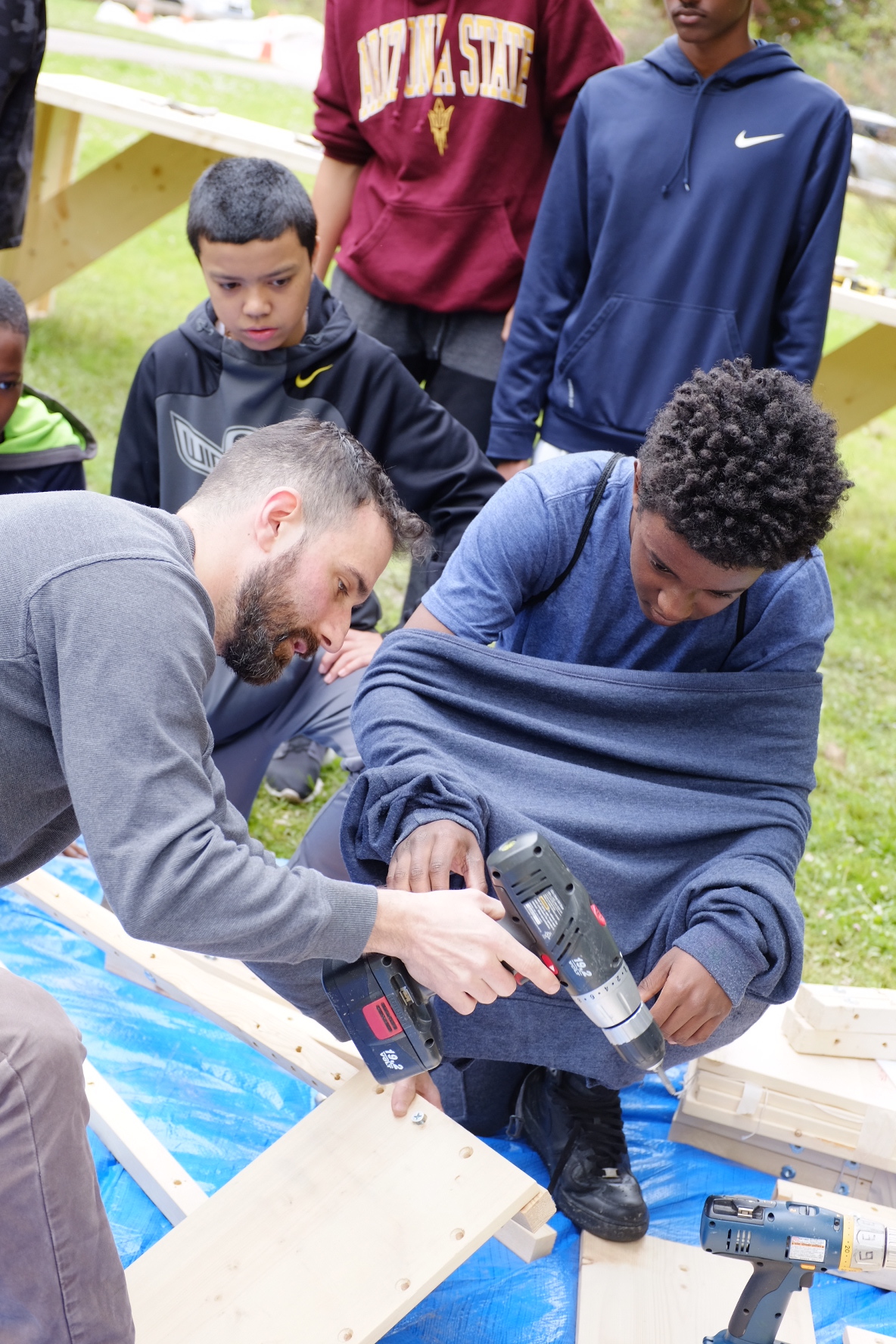Southeast Seattle Urban Agriculture
Reconnecting the residents of Southeast Seattle with the processes of making associated with the goods that they consume.
Project Brief
The 2017 University of Washington capstone studio collaborated with Seattle Tilth Alliance, an urban agriculture initiative, to develop an easily built and deployed product system for urban farming. Participatory workshops conducted in Southeast Seattle at the Rainier Beach Urban Farm and Wetland informed design decisions in the making of the product system.
My Role
I worked in a team with six other graduate student designers over the course of six months. I was largely responsible for the development, design, and construction of the product system as well as coordinating and organizing participatory workshops. I was also responsible for renderings and presentation materials.
Participatory Workshops
After conducting literature reviews and exploratory research of successful urban agriculture programs, the capstone studio conducted a series of participatory workshops with the Seattle Tilth staff and Southeast Seattle residents over the course of three months. These workshops were focused on identifying the needs of urban farmers in regards to cultivating spaces for farming. A portion of these workshops were aimed at site design for the Rainier Beach Urban Farm and Wetland, but my research and work was focused on the product system.
From these workshops we found:
Need for storage
Need for seating
Need for workspace
Need for raised planters
Need for an easily built/constructed system for farming
Seattle Tilth staff participatory workshop
Elder farmers participatory workshop
Synthesis and Iteration
Using the information gathered from the workshops we produced a list of common design goals. As a cohort we decided that we wanted to produce a product system that would require use of minimal tools and materials for assembly. We divided into four design teams and developed four different prototypes using various materials and methods of construction. These four design schemes were reviewed by the Seattle Tilth staff, and the best components of each design were combined to create our final product.
I digitally modeled the new product system in Rhino 3D with the goal of physically building it using only the tools listed below. The only materials required for construction were: wood planks and dowels, carriage bolts, and nuts.
I began building the various components of the product system while also testing different materials for production. This testing lead to the creation of the cost/benefit matrix shown below.
Materials cost/benefit matrix
Conceptually, this system was meant to be turned into an open source product that would be available online. Resources such as instructions for building, maps showing where to find materials, and a digital template would be available on a web page designed for the product system. The ultimate goal was to create an emergent network of urban farmers and makers in Southeast Seattle.
Final presentation boards
Building and Developing An Instruction Manual
After refining the design and testing materials, we conducted building workshops with Southeast Settle residents. Workshop participants were given printed instructions for how to assemble the various components of the product system. The design team offered guidance upon request.
Building workshop with Rainier Beach Jr. High School students
I later worked with Yuan Fang to develop a color coded step by step instruction manual based upon feedback from these workshops.
Multiple copies of the final manual were laminated and given to Seattle Tilth Alliance and Rainier Beach Jr. High School students for distribution, and all planters, tables, and benches built during these workshops were donated to the Rainier Beach Urban Farm and Wetland.
Conceptual rendering of product system at newly built Rainier Beach Urban Farm and Wetland educational center







